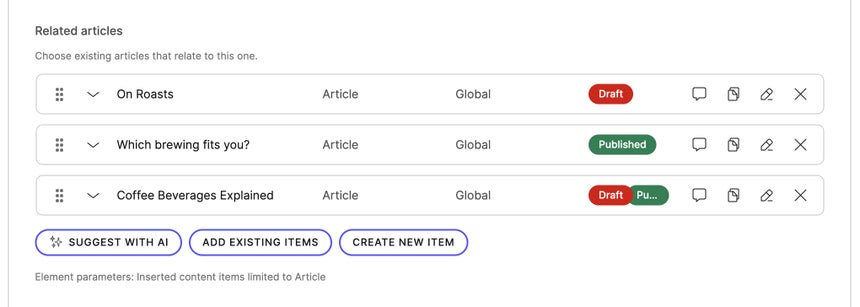Reuse content with linked items
Reusing content with linked items is the next superpower you’re going to learn.Using linked items will speed up your content creation process and add semantic connections between your content items. These relationships may power various “You might also be interested in this article“ sections or similar on your website or in your app.
